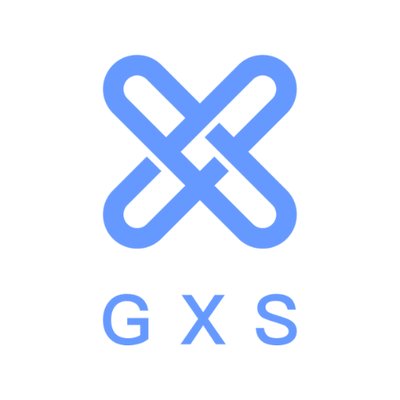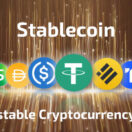GXChain is a decentralized data exchange platform that is being built to facilitate the secure and anonymous exchange of data. The project was founded in 2016 by Chinese blockchain technology firm GXB (Hangzhou CunXin Data Technology Co., Ltd). The GXChain project’s aim is to build a trustworthy network that enables data to circulate efficiently without any risk of centralization.
Its target clientele includes companies engaged in the internet finance sector (banks, stocks, loans, etc.), government entities and businesses with a high demand for data exchange (healthcare department, logistics, insurance, etc.). GXChain stands out compared to other similar projects because:
High performance and scalable – By using a Delegated Proof of Stake (DPoS) consensus algorithm, GXChain can process 10,000 to 100,000 transactions per second. The platform can meet growing demands from on-chain businesses and expand horizontally to allow even higher transaction throughput without needing a hard fork.
Real-time parameter adjustment – Instead of initiating a hard fork to change parameters like block time, block size, and transaction fees, GXChain can adjust all those parameters via voting.
Supports app development – GXChain supports the development of decentralized apps (dApps). It has an open API developers can use to create apps that pull information from various fields via its data exchange.
Supports the transfer of big data – The data exchange supports the transfer of data in multiple industries. Companies and individuals looking to acquire data from a particular industry could use the exchange to purchase the information they need.
User-issued tokens – The platform allows individuals and companies to create and issue their own tokens.
Open source – GXChain is an open-source project an its code is open to the public on GitHub.
Enterprise Applications and GXShares Token
The first enterprise application built on GXChain is the GXB Data Exchange, which facilitates the transfer, circulation, and trade of data between companies in a decentralized and secure way. The second application is the GBX dApp for personal credit management and credit verification.
Individuals can use it to check their credit information via the GXB Data Exchange and securely verify their identity for credit evaluations. The app could broadly be used for recruitment, lending, renting, dating, over-the-counter trading, and more.
GXChain also features its own internal token called GXShares (abbreviated GXS) that powers every aspect of the platform. GXS is required for app development, certification, and other services. The token will also serve as “ballot paper” for voting for trusted nodes in GXChain’s consensus algorithm.
How GXChain Works
GXChain uses a Delegated Proof of Stake (DPoS) algorithm to secure its blockchain and validate transactions, and a Proof of Credit Share (PoCS) algorithm for data exchange consensus.
The DPoS system was invented by blockchain engineer Daniel Larimer as an improvement to Bitcoin’s Proof of Work (PoW) algorithm. It uses less electricity, validates transactions faster, and is less prone to centralization.
Under a DPoS system, users vote for trusted nodes known as “Witnesses” who are responsible for validating transactions and securing the blockchain. A user’s vote strength is determined by the number of tokens they hold, which means users with a lot of tokens have more influence than users with a few tokens. The users who get the highest number of votes become Witnesses.
Only the top 100 Witnesses receive block rewards, and the top 20 earn the largest portion. This is meant to encourage Witnesses to continuously add value to the network and also makes becoming a Witness very competitive. If a Witness fails to perform their duties, users can remove their votes and essentially fire them.
Voting is an ongoing process. The system is designed to recognize valuable members and flush out bad actors, and it works quite well. The GXB team chose DPoS for two reasons:
1. Better transaction throughput – Bitcoin is often criticized for being energy intensive. Millions of dollars have been invested in maintaining Bitcoin’s network, but it can only process between 3.3 and 7 transactions per second. This is extremely low, especially when compared to the thousands of transactions VISA and Mastercard can process in a second.
2. Lower risk of centralization – PoS mechanisms have become popular alternatives to energy-hungry PoW mechanisms. Instead of requiring expensive mining rigs, the algorithm enables staking users to become the keepers of the ledger. However, the system is prone to centralization as a small portion of users with the largest amount of tokens end up having all the power. PoS blockchains also tend to be slow because of consensus issues and network delays.
The GXB team believes DPoS could overcome the drawbacks of PoW and PoS protocols. In addition to being more energy friendly, DPoS can theoretically process 10,000 to 100,000 transactions per second depending on network quality, which makes it ideal for industrial applications. As a an exchange platform, GXChain must have a high transaction throughput and network stability.
Proof of Credit Share (PoCS)
PoCS is a consensus algorithm developed by the GXB team to fix imbalances in the exchange of data between big companies and small companies. The algorithm scores members based on the frequency of their transactions. The score is calculated after they complete exchanging data and its value contributes to the transaction fee. Members with a low score will pay higher transaction fees to exchange data, while members with a high score will pay less.
GXChain vs. Other Cryptocurrencies
GXChain isn’t the first blockchain project to attempt to create a decentralized exchange where data can be sold and exchanged between companies, developers, and individuals. Its goals and objectives seem similar to those of RepuX, a blockchain project that wants to use InterPlanetary File System (IPFS) together with Sia and Ethereum to transfer data directly between individuals and companies.
The key difference between GXChain and its competitors is that it appears to have the blessing of the Chinese government, which has passed several regulatory policies limiting ICOs and cryptocurrency trading activity. By operating in China, GXChain is entering one of the largest data trading economies in the world, and it may very well be the only blockchain project that has access to that market.
GXShares Pricing, Market Cap and Volume
There isn’t a lot of information about the GXShares ICO, but it was reportedly held in February 2017. There is a finite supply of 100,000,000 GXS of which 60% is already in the circulating supply. The tokens were distributed as follows:
– 39 million tokens were sold in the ICO.
– 10 million tokens are held in private equity.
– 51 million tokens are held by the GXB Foundation.
The funds held by the GXB Foundation will be used for hiring, community development, business development, and marketing. Another 6 million tokens will be released during the first year, followed by the release of a maximum of 5 million tokens every year after until the foundation’s supply is expended.
GXShare’s market cap was first listed as ~$140 million USD in August 2017 by CoinMarketCap. At the time, the value of one token was ~$3.50 USD. Its price has remained more or less the same in the months that followed with the exception of a big spike in January 2018—likely because of the increased interest in Bitcoin alternatives—that raised the market cap to ~$622 million USD and the value of one token to ~$10 USD. GXshare’s price has since gone down.
GXShares Buyback
The GXB team will use 10% of the data exchange fees to buyback GXS. The tokens will be transferred to a buyback address where they will be destroyed. Nobody, not even the GXB team, has the private keys to the buyback address. The GXB team wants the process to be completely transparent and they encourage users to use the blockchain explorer to monitor each buyback.
The buyback will run until all ICO and private equity tokens are destroyed. The first buyback was initiated in December 2017, and another will be held once every three months for the first year. During the second year, a buyback will be initiated every two months. In the third year, it will be once a month.
The GXChain whitepaper doesn’t give a reason for the buyback. Perhaps the developers believe burning a portion of the total supply will inflate the value of GXS in the future.
Buying, Storing and Selling GXShares
The native token of the GXChain, GXShares, can be bought and sold on a number of big Bitcoin exchanges including Bit-Z, Binance, OEX, QBTC, Gate.io, BigONE, OTCBTC, and Allcoin. For the most secure storage option, the GXB team has developed a GXS wallet for PC and mobile devices. The PC version is available on Windows, Linux, and Mac OS X while the mobile wallet is available on Android and iOS.
Liquidity of GXShares
GXShares has good market liquidity on Asian crypto exchanges, but it hasn’t yet caught on in the western crypto market. Interestingly, the GXB team doesn’t seem to be in a hurry to target the western market. This is probably because China—as the second largest economy in the world—is an enormous data exchange market on its own. GXChain’s development comes at an opportune time and the project could prove to be extremely profitable in the coming years.






